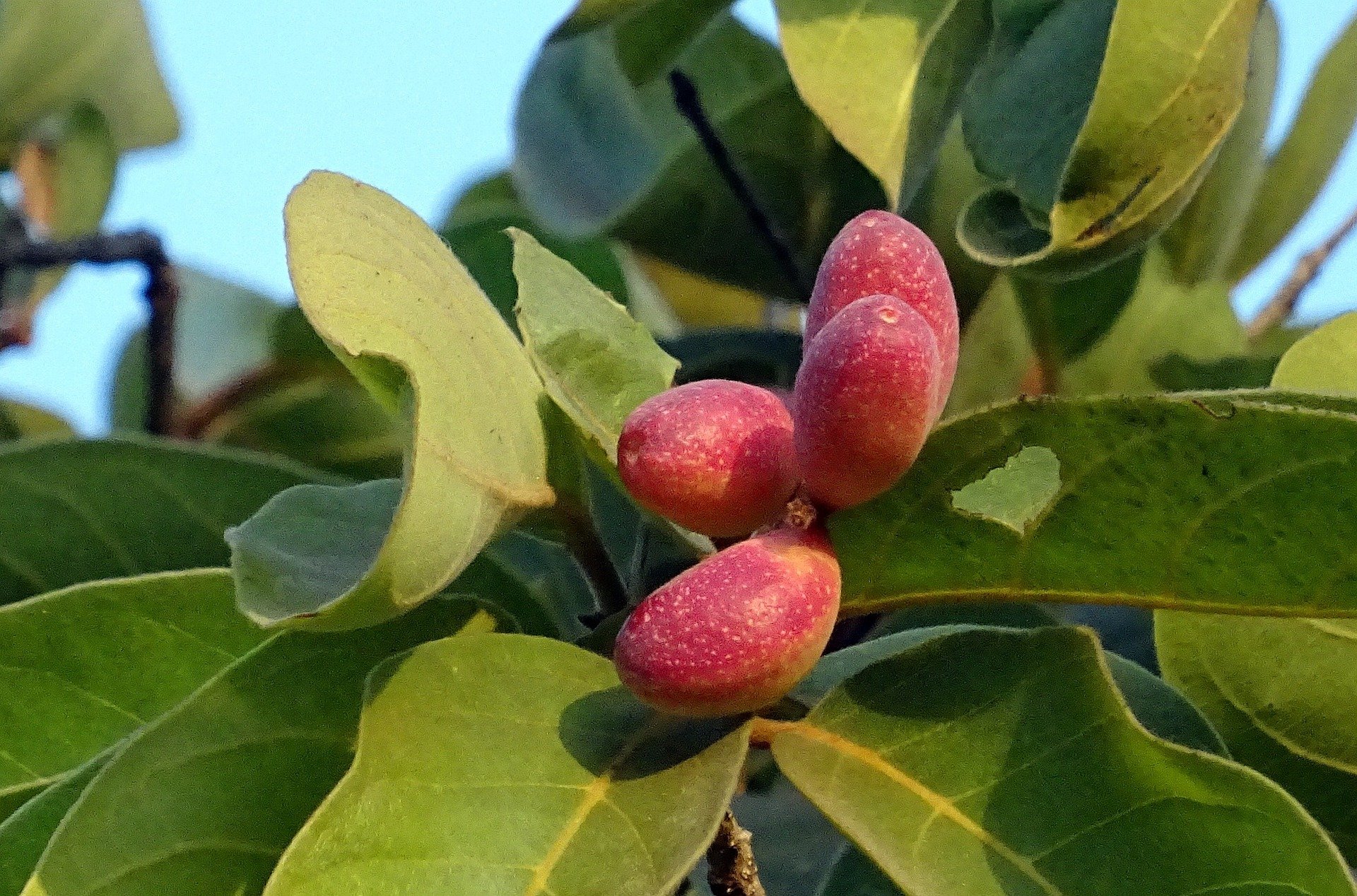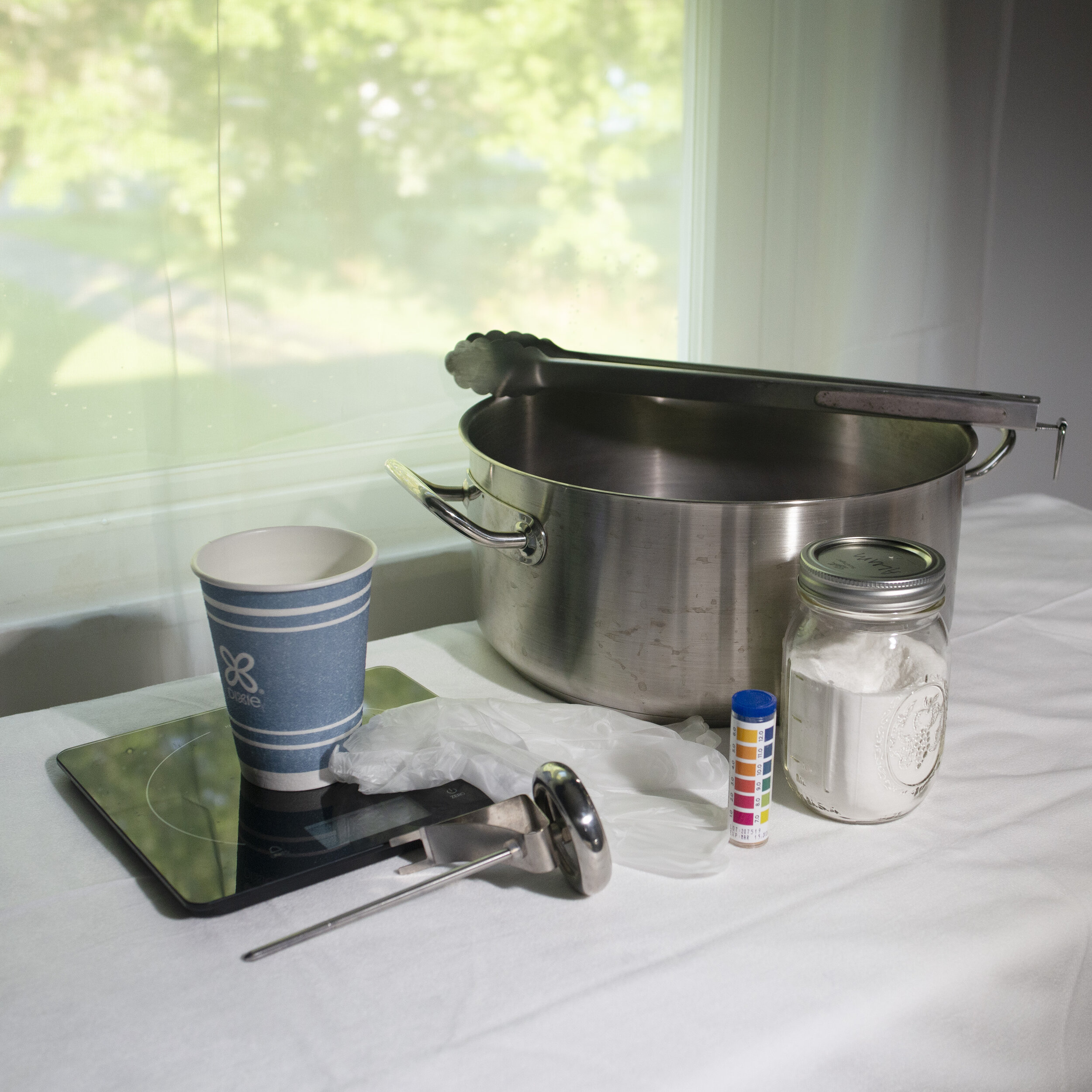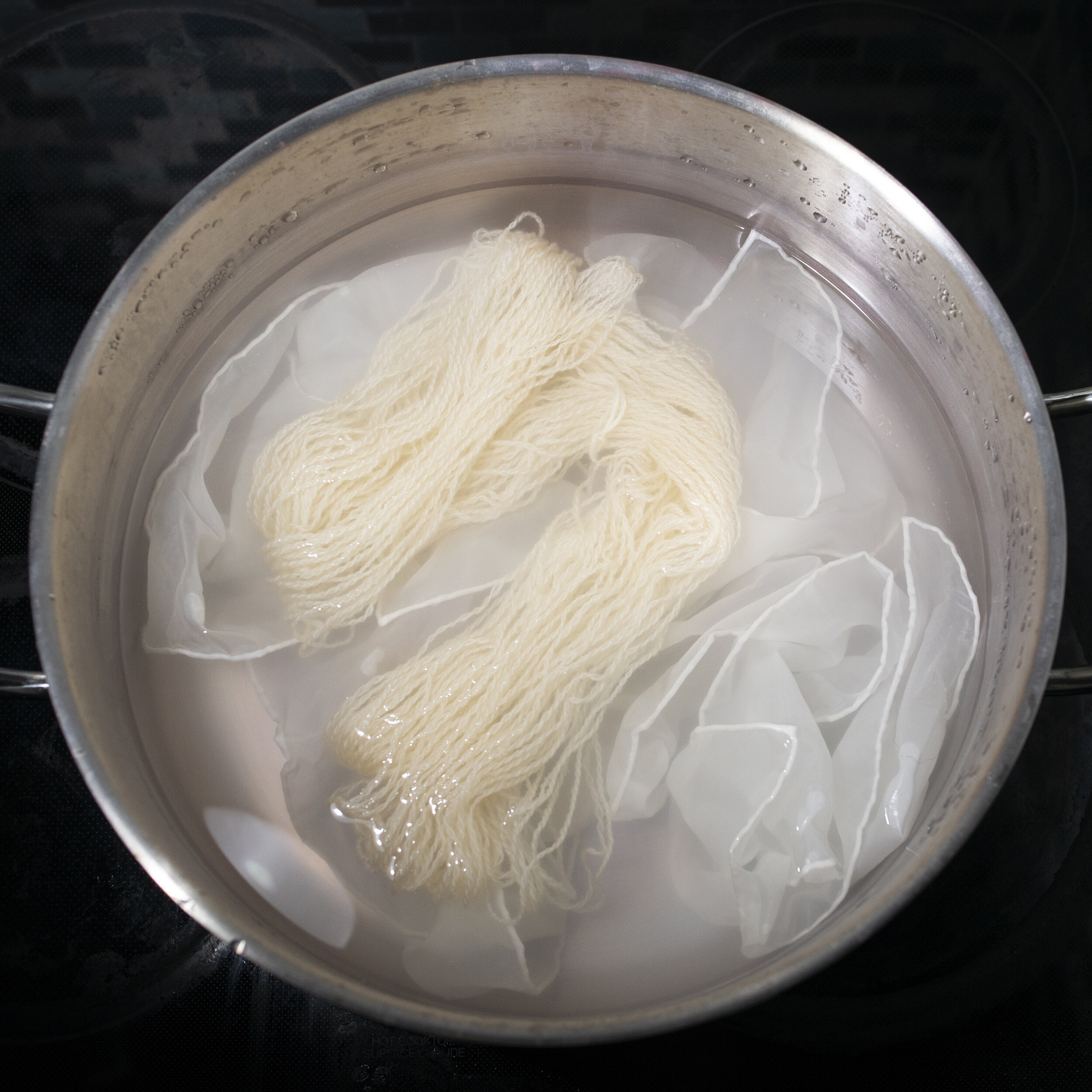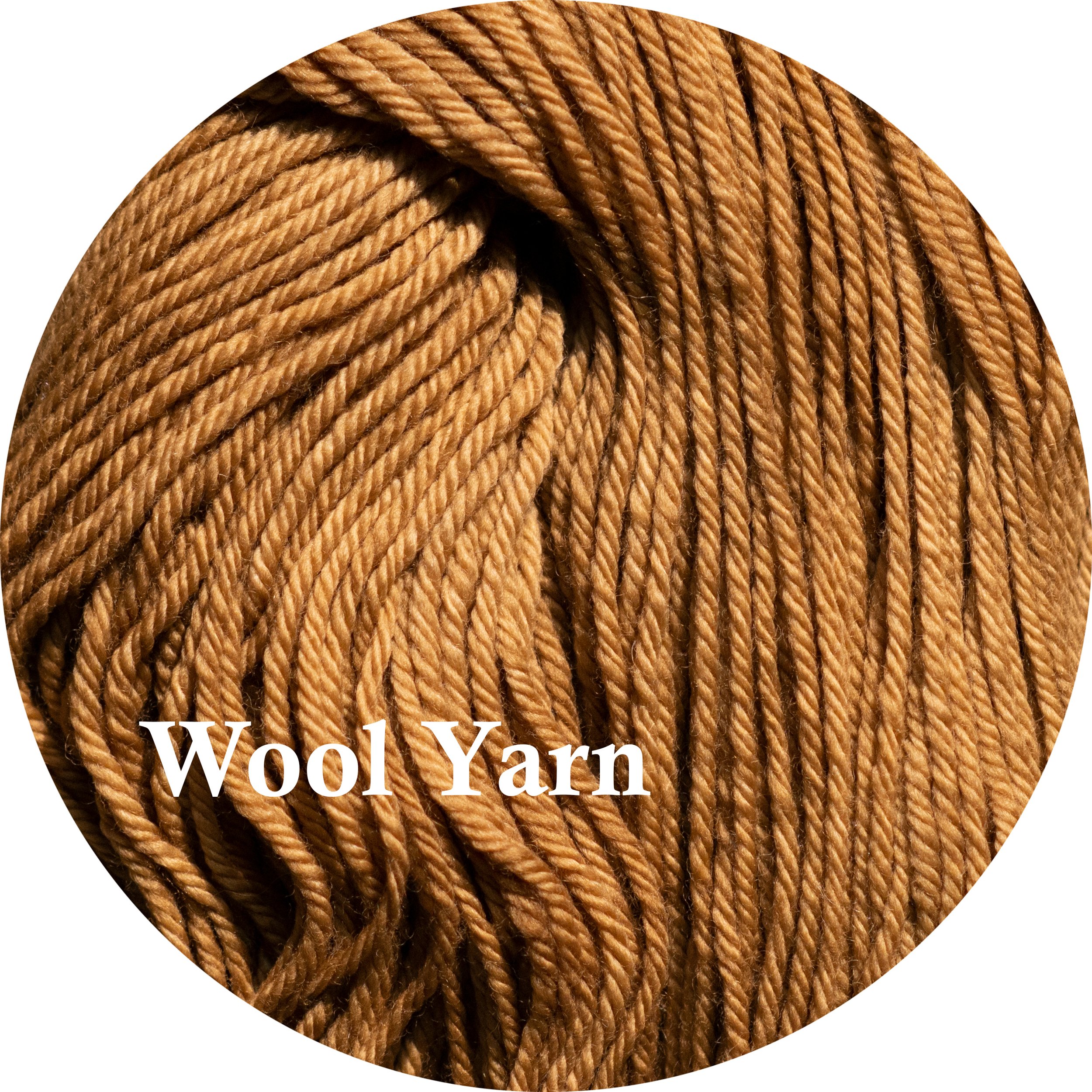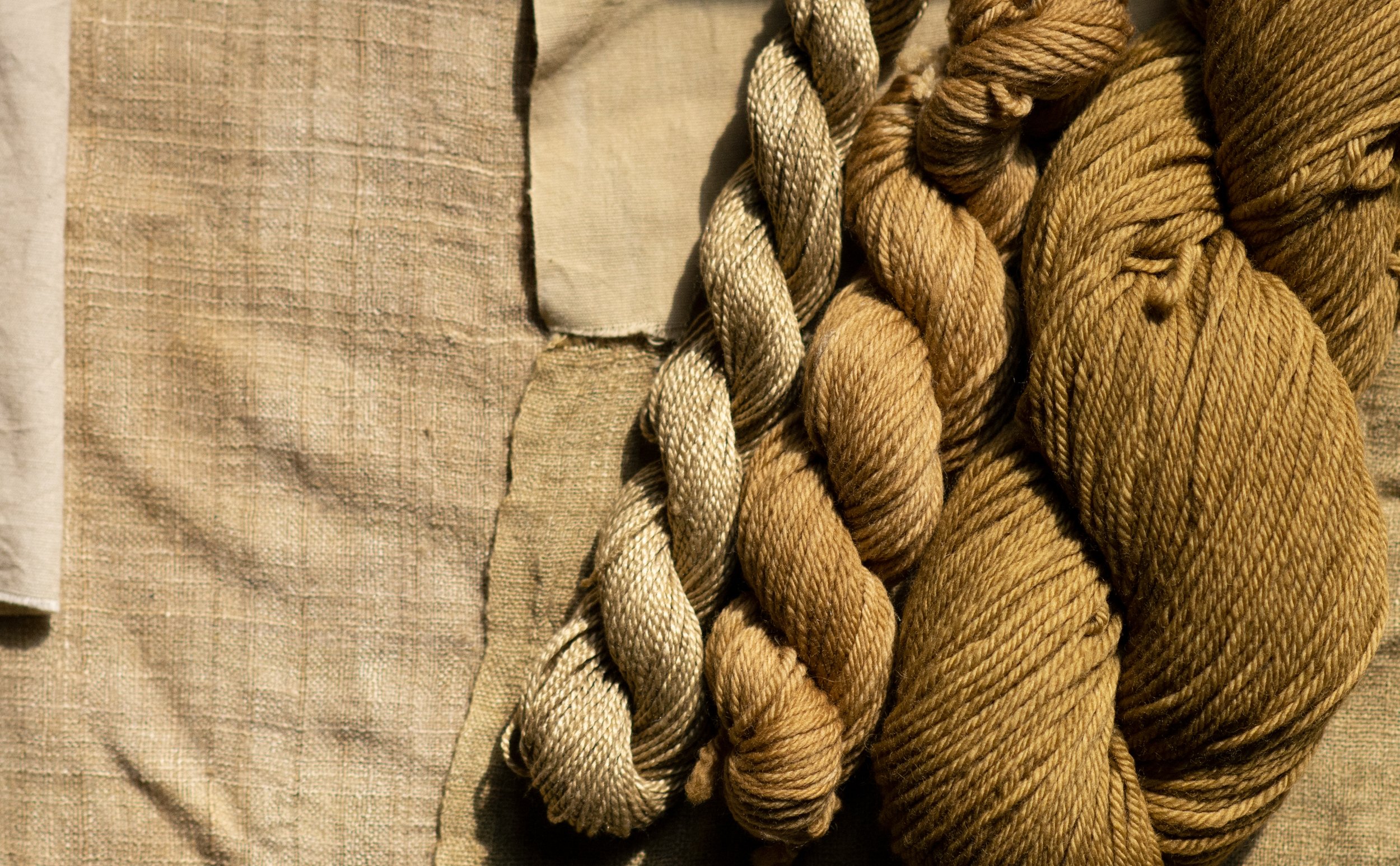
Myrobalan Extract
A Guide to Myrobalan Extract
Shepherd Textiles Myrobalan Extract Natural Dye is made from the fruit of terminalia chebula, a tall tree native to South Asia. Myrobalan fruits are rich in warm ellagic tannins, and in India myrobalan is traditionally used to tan cotton before dyeing it with other natural colors. However, myrobalan can also give its own color on natural fibers, a warm yellow or bronze shade. Our Myrobalan Extract is a highly concentrated form of the fruit—use at 5% for warm yellows or 10% for rich bronzes. Product of India. Produced by a GOTS (Global Organic Textile Standard) certified manufacturer.
1. Background on Myrobalan
Myrobalan is made from the fruit of terminalia chebula, a tropical tree native to South Asia. The tree's fruits and seeds are especially rich in tannins, and myrobalan has been used for centuries in India to tan cotton to prepare it for being dyed. Cotton is not naturally receptive to mordants and natural dyes because of its ionic charge. However, cotton will soak up a enormous quantity of tannins, and when tannin-laden cotton is placed in a mordant bath, the tannins will bond to the metal ions to fix the mordant onto the cotton. Afterwards, cotton can be dyed much more successfully with natural dyes like cochineal, madder, or logwood. Besides tanning, myrobalan at higher concentrations will also dye its own color on natural fibers, a warm yellow that can deepen to bronze.
Our Myrobalan Extract is imported direct from the source in India, and it is up to 6 times as strong as the raw ground fruits. Use at 5% weight-of-fabric to tan cotton or give warm yellows on wool and silk; increase to 10% with an alum mordant for darker bronze colors. Certified by the Global Organic Textile Standard for use on fibers that will be labeled “organic.”
The Classic Tannin for Cotton
2. Safety Precautions
DO NOT INGEST. This product is intended for textile dyeing, not as an herbal supplement.
Open carefully to avoid spills or creating dust.
Avoid eye contact. If eye contact occurs, rinse with cool water.
Not for use as a cosmetic additive; do not apply directly to skin or hair.
If a spill occurs, quickly wipe up with a paper towel or disposable rag.
Use only dye pots and utensils dedicated to dyeing. Do not use any pots, containers, spoons, tongs, thermometers, or other utensils that will be used for food preparation.
Myrobalan Extract powder, and all dye baths and mordant liquors made while dyeing, should be kept out of reach of children and pets. Use only with adult supervision.
Shepherd Textiles, LLC is not liable for any misuse of this product or any unintended staining of your clothing, workspace, or other property. Use only as directed.
3. Recommended Supplies
Dye pot. Use a dye pot large enough to hold all your fibers, with plenty of room for them to move around and for the liquid to circulate freely.
Metal tongs. A pair of tongs is useful for stirring and taking fabric out. Use tongs dedicated to dyeing, and not for food preparation.
Rubber gloves. Wear rubber gloves while handling mordanted/dyed fiber before it has been rinsed.
Candy thermometer. The best way to keep track of temperature is to use a candy thermometer that clips to the side of the dye pot.
Scale. Use a scale to weigh out fiber, mordant, and dyestuff.
Alum mordant (optional). The alum usually used for mordanting is aluminum potassium sulfate, also known as potash alum. It is the same alum that you can find in a jar in the spice section at the grocery store.
4. Preparation: Mordanting with Alum (Optional)
Myrobalan Extract is a substantive dye and does not require a metal mordant. However, mordanting with alum can be helpful if you are trying to get darker shades of bronze using myrobalan as a dye (rather than as a pre-treatment for cotton). If possible, soak your fibers in water for a few hours before mordanting, so that the mordant will penetrate deeply and evenly. Make sure to weigh the fibers first, while they are still dry.
For protein fibers (wool, silk, alpaca, etc.): Mordant at 12% WOF with alum.
Weigh out the fibers you plan to dye (while they are dry). Multiply that weight by 0.12 to get the amount of alum you will need.
Fill your dye pot with hot tap water, leaving enough room for the fiber.
Weigh out the correct amount of alum and pour it into the dye pot. Mix with a spoon or metal tongs until it has dissolved.
Gently place your fibers into the mordanting solution.
Heat mordant bath to 180F and maintain heat for 1 hour. If you don’t have a candy thermometer, you will have to estimate the temperature. At 180F, steam vapor will be rising off the water but it will not be bubbling. If your mordant bath starts to bubble, turn down the heat.
Stir every 15 or 20 minutes to make sure fibers mordant evenly. If they do not, the dye will take better in some places than others.
After an hour, remove from heat and let cool to room temperature. Once cool, you can immediately proceed to rinsing, or you can leave the fibers to steep overnight in the mordant bath. This can dramatically improve results, especially when dyeing thick or tightly woven fabrics.
When ready to rinse, put on rubber gloves and gently squeeze excess mordant solution back into the pot. Rinse fibers briefly in lukewarm water. The fiber does not need to be thoroughly washed, but any excess mordant should be rinsed out. Set aside until ready to dye. Keep out of reach of children and pets.
Dispose of mordant solution according to local guidelines.
For cellulose fibers (cotton, linen, etc.): Scour well and treat with Myrobalan Extract before mordanting.
To get darker shades of bronze on cotton, start by tanning it once in a solution of Myrobalan Extract; this will make the cotton more receptive to mordants. Then, mordant it with alum and dye it in a second dyebath of Myrobalan Extract.
Scour cellulose fibers well. Traditionally this is done in a highly alkaline soda ash solution. Add 2 tsp of soda ash and 1 drop of dish soap to a 5-gallon dye pot. Add cellulose fibers and heat to 180F-190F for an hour, stirring occasionally. Remove from heat, and when cool enough to handle, rinse and wring out well. Household detergents like Tide© are also alkaline (PH 11), so you can also toss the fiber in a washing machine on a high-temperature cycle with plenty of detergent. This will not clean them nearly as deeply as simmering with soda ash, but it will yield much better results than not scouring at all.
Apply Myrobalan Extract to the cotton to tan it. Fill your dye pot with hot water, dissolve 5% WOF Myrobalan Extract into the water, add the cotton, and simmer for an hour. Remove from heat and allow to slowly cool to room temperature: for best results, steep overnight. After steeping, remove the cotton and gently squeeze out excess liquid (wearing rubber gloves), but do not rinse, as this may rinse out the tannins before they bond to the fiber.
Prepare an alum mordant bath as described above for protein fibers, but add 2% weight-of-fabric soda ash (washing soda) and mix well before adding the cotton. This will change the alum into a basic form that bonds much better to cotton. Proceed to mordant as described above.

The Recipe
5. Recipe: Bronze
At 5% weight-of-fabric, Myrobalan Extract gives golden tan colors on fibers mordanted with alum. To get deep bronze colors, push the concentration to 10% weigh-of-fabric. For best results, we recommend tanning and mordanting cotton as described above in Section 4.
Fill your dye pot with warm water.
Weigh out 10% weight-of-fabric (WOF) of Myrobalan Extract powder. Put it in a disposable cup with a little warm water and mix well to break up any clumps.
Add the Myrobalan Extract slurry to the dye pot and mix well.
Put your pre-mordanted, pre-soaked fibers in the dye bath.
Heat the dyebath to 180F. Maintain the heat for 90 minutes, stirring occasionally to make sure all the fibers dye evenly. After 90 minutes, take off the heat and allow to cool to room temperature.
When cool, remove the fibers and rinse briefly in lukewarm water. You can either proceed immediately to rinsing with detergent, or hang the fabric up to dry first to help the color set. Make sure to hang it up in the shade somewhere where dripping dye will cause no damage. Direct sunlight may fade the color before it has had time set.
For final rinsing, we recommend using a PH-neutral detergent like Synthrapol, which is designed to wash out loose dye. Follow the manufacturer’s directions for best results. CAUTION: Myrobalan Extract may bleed if not thoroughly rinsed out after dyeing.
Hang up to dry out of direct sunlight.
All images and text are copyright of Shepherd Textiles, LLC. Do not reproduce without written permission and attribution.



